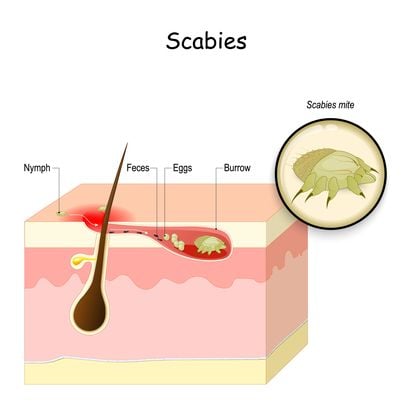
Scabies is an intensely itchy rash caused by an infestation with a burrowing mite called Sarcoptes scabiei. Infected individuals develop pink papules, excoriations, nodules, and burrows (thread like tracks in the skin). These findings mainly affect the hands, wrists, axillae (armpits), feet, waistline, and genitalia. It is spread by direct, prolonged, skin-to-skin contact with a person who has scabies and may also be spread through sharing bedding, clothing, or towels with an infected person. Scabies can be treated with topical and/or oral medications. Additionally, washing bedding, clothing, and towels and vacuuming furniture and carpets are recommended to eradicate the mite.
Disclaimer:
The information on this website is provided for educational and information purposes only and is not medical advice. Always consult with a licensed medical provider and follow their recommendations regardless of what you read on this website. If you think you are having a medical emergency, dial 911 or go to the nearest emergency room. Links to other third-party websites are provided for your convenience only. If you decide to access any of the third-party websites, you do so entirely at your own risk and subject to the terms of use for those websites. Neither Lydia M Evans, MD, nor any contributor to this website, makes any representation, express or implied, regarding the information provided on this website or any information you may access on a third-party website using a link. Use of this website does not establish a doctor-patient relationship. If you would like to request an appointment with a health care provider, please call our office at 914-238-1500.


